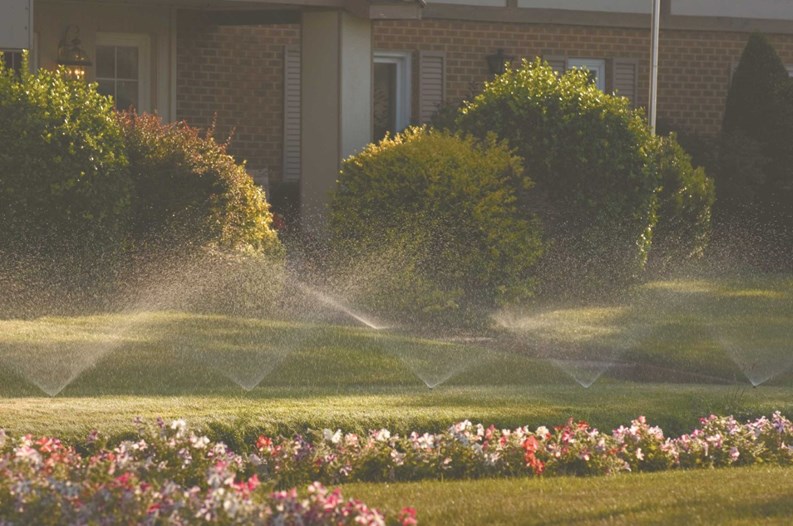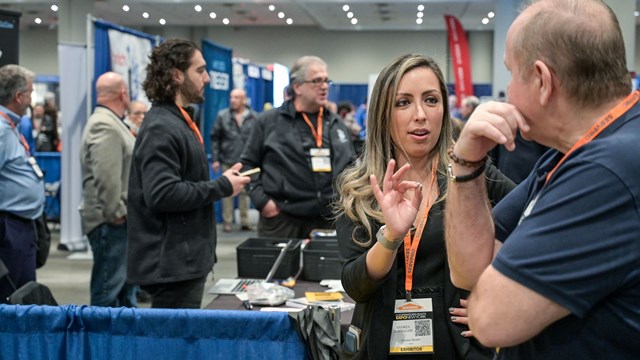Whether you live in a towering high-rise or a sprawling suburban development, landscaping not only helps a condo or HOA increase and retain property values, but has a positive impact on residents themselves—beautiful, functional green spaces and plantings increase pride of ownership, influence morale, and just generally make a place more pleasant to be in for owners and visitors alike. And unless there happens to be a master gardener or landscape architect on a building board or grounds committee, chances are that the community’s administrators will have to call upon a professional landscape specialist to help make the most of their building’s potential. “With the real estate where it is, you want to have your property looking good as you can, just because of the state of the real estate business,” says Brett Ashley, regional sales leader for ValleyCrest Landscape Companies in West Palm Beach. “Curb appeal is good. Investing in your property’s look is about getting that first impression. You want folks to pull in and have a sense of arrival. Wow—this looks great,” he says.
Before You Make the Call
Everyone agrees a nice landscape is a positive thing for an association, but it’s important to consider when to hire a landscape designer, and have an idea of what’s needed. For condos and HOAs, a landscape may be dated, a situation in which some of the plant material has pretty much lived its life. There is, after all, a shelf life on some plant material. “As it reaches that point, it stops performing, and the design plan as it’s kind of meant to be doesn’t work as well,” says Ashley. Landscape designers are also approached for other reasons besides a dated look. “If there’s a weather event, either a cold snap, a hurricane, a bad storm, flooding, there’s usually a reason as it relates to weather that will drive the event. Sometimes it’s even a pest—a white fly, or some sort of insect that’s gotten into the area,” he explains.
Landscape designers will tell associations that they need to have an idea of what purpose they want a landscape to serve. “The old adage that form follows function, that’s a landscape term. I think it’s important to understand what the end result is, what is the space going to be used for, what are the long term implications to what the expectations are,” says Ashley. If associations don’t have experience with landscape design, they can consult with designers to get an idea of what they’re looking for. “Landscapers should be asking the property owners, ‘What's the use?’ Is it going to be aesthetic, is it going to be an area that’s going have pedestrian traffic, vehicle traffic? Is it going to be a play area, or a designated park space? Those are the factors they need to take into account,” says John Cross, owner of Lawn Care and Pest Control, serving most of the South Florida area.
Especially for those who have not ever worked with a landscape designer, simply finding the right one can be stressful. Part of the reason is because pricing can be difficult. Much of the cost of a project depends on what materials will be used, and how much labor is required. For that reason, competitive bidding can be tricky because the lower bid might not be fulfilling everything asked for in the plan. “Fill out a request for proposal (RFP). Ideally, the way that most business gets done, is to get a referral. Ask other associations what their experiences have been,” says Cross.
“Typically HOAs don’t go into much disrepair,” says Cross. Most associations in South Florida tend to be pretty well maintained, but maybe the current lawn and those few trees just aren’t cutting it anymore, or maybe they’re just starting to look a little old. Once associations and designers are in agreement on what the intended use is, careful planning should follow. “They should have a one-, three-, and five-year plan that they’d like to accomplish for the property. Let’s see what we need to do immediately, and then let’s look at five years from now,” says Cross. “Everybody has grandiose plans, but you need a way to pay for it. What’s your highest priority, what kind of funds do you have available for that?” he says.
Doris Heitzmann, the community outreach coordinator for the Florida-Friendly Landscaping Program in Pinellas County, says that even though HOA residents often don’t make direct decisions about their landscaping, they should understand the principles of good landscaping. Some associations, she says, have aged, and their landscaping and equipment date back to when they were first put in by the builder and developer.
“Many of the associations or most of the associations I'm dealing with are very old, and the irrigation systems are very old, so the plans for the landscape have changed,” says Heitzmann. “It's mature and the design of the landscape irrigation is not very up to speed, meaning, it doesn't really fit in many cases anymore, and then it's just old. It's not really functional anymore because of old age. The piping is interrupted from the roots, or the roots are growing into the pipes or whatever. So, as a landscape matures, the original landscape needs to be adjusted or it needs to be changed to the current landscape needs, and that doesn't happen a lot,” she says.
Taking the First Steps
So, what can a board/HOA do to insure proper ongoing maintenance and preservation of the original design intent even as a community ages? The first step should be to have the landscape architect generate a scope of work that outlines the long term specifics of care required. This should be very specific with regard to turf maintenance, tree care, soil testing, mulching and so on. The board/HOA should include the scope of work when requesting a bid. This can become very tedious and the landscape contractor may balk, however it introduces the importance of establishing a deeper understanding of what is required to insure longevity.
Secondly, do the same for seasonal plantings. There should be a detailed outline of the recommended seasonal plantings. This works better than allowing the landscape company to plant whatever is available at that moment. The landscape architect is the expert on his/her design, and that professionalism should be honored. Third, remember to get references from trusted sources. And, lastly, always ask to look at the work of the company before hiring. And, make sure that the board/HOA or management company doesn't “tie the hands” of the landscape maintenance company in order to save money. If this becomes the case then the landscape contractor won’t be able to do its job.
Sharing the Vision
A challenge for landscape designers can be how to convey the plan to their customers. “What we have found over the last 20 years, is that sometimes it’s harder to put that picture in the mind’s eye of a board of directors,” says Ashley. “So there’s technology that we’re using, where it’s a digitally-enhanced photo. We’ll take a picture of an entry and use a digitally-enhanced photo of what it would look like. We’ve found that that’s actually a good way to do it. You can just change the photo and make it look like the board really wants it to look, and it saves a lot of wasted money, a lot of wasted effort,” he says.
Landscape professionals are also concerned with larger questions, things like sustainability, and are able to take cues from a perspective that’s larger than the property lines of the site where work is to be done. “In Florida, one of our sayings is ‘right plant, right place.’ You want to look for more a native plant and put in a right place, based on how the soil behaves; is the plant full sun, partial sun, all shade, that kind of thing,” says Cross. Using plants native to the area can make an association’s landscape much healthier and more durable. “They’re used to the environment. They can handle he environmental factors, the temperature, the period of drought we go through, the high humidity, and the temperatures. They’re a little more hardy when it comes to pests and things like that. Most of the plant problems we have are with the imported plants,” says Cross.
Once associations and designers have agreed on the basics, the issue of cost will come into play quickly. Ashley recommends that associations show some flexibility with the final product, as it will be largely based on the budget provided. “If they’re looking at it as an enhancement, I think it would make good sense to get a couple different options,” he says. “There’s such an array of plants to use and sizes. In a 10 by 10 space your cost can be $1,000, it can be $10,000. It depends on what you want to spend and the look you want. We’re trying to design and get the most bang for the buck. Most designers are going to require and really need a budget. Designers need an idea of what you want to spend, and then you can look at the actual plan presented and compare,” says Ashley.
The weather provides a full season for plants, but certain times are still better than others to start a landscaping project. “For Florida, we’re kind of always in season. We have cooler months, but even in the cooler months landscaping projects are just fine. There’s probably a longer time with the planning,” says Ashley. “The execution is for the most part within a couple of weeks. In the cooler months we typically have more time to spend and more resources to use. When we get into the summer, the height of the growing season, we’re really battling to keep the grass cut, keeping the shrubs trimmed, keeping the weeds under control.”
Municipal codes are a factor that boards and associations definitely need to be aware of. Many cities and towns have certain requirements of tree cover, and greenery preservation that can cause legal issues, or fines if not obeyed. “I would encourage boards to use a larger reputable company that is aware. Typically there’s building codes, there’s setback, there’s shade tree requirements. Your landscaper should be able to handle that for you, to understand those codes and recognize what needs to be done,” says Ashley. “What I've seen is that, let’s say you have 20 plants for each unit, and you want to switch it around, as long as you keep the original numbers of plants, you usually don’t need a license for that. But it’s good to get some counsel on things like that,” says Cross.
Landscape design can be a huge investment. But, it’s not a needless detail. A well thought-out design can enhance more aspects of home life than just the property value. “Over time some of those projects end up paying for it in the tail end. A good landscape in a lot of ways can create an environment where folks feel healthy and vibrant. People feel better when they’re surrounded in a nice garden environment. At the end of the day it shows you care,” says Ashley.
Denton Tarver is a freelance writer and a frequent contributor to the South Florida Cooperator. Editorial assistant Tom Lisi also contributed to this article.





Leave a Comment